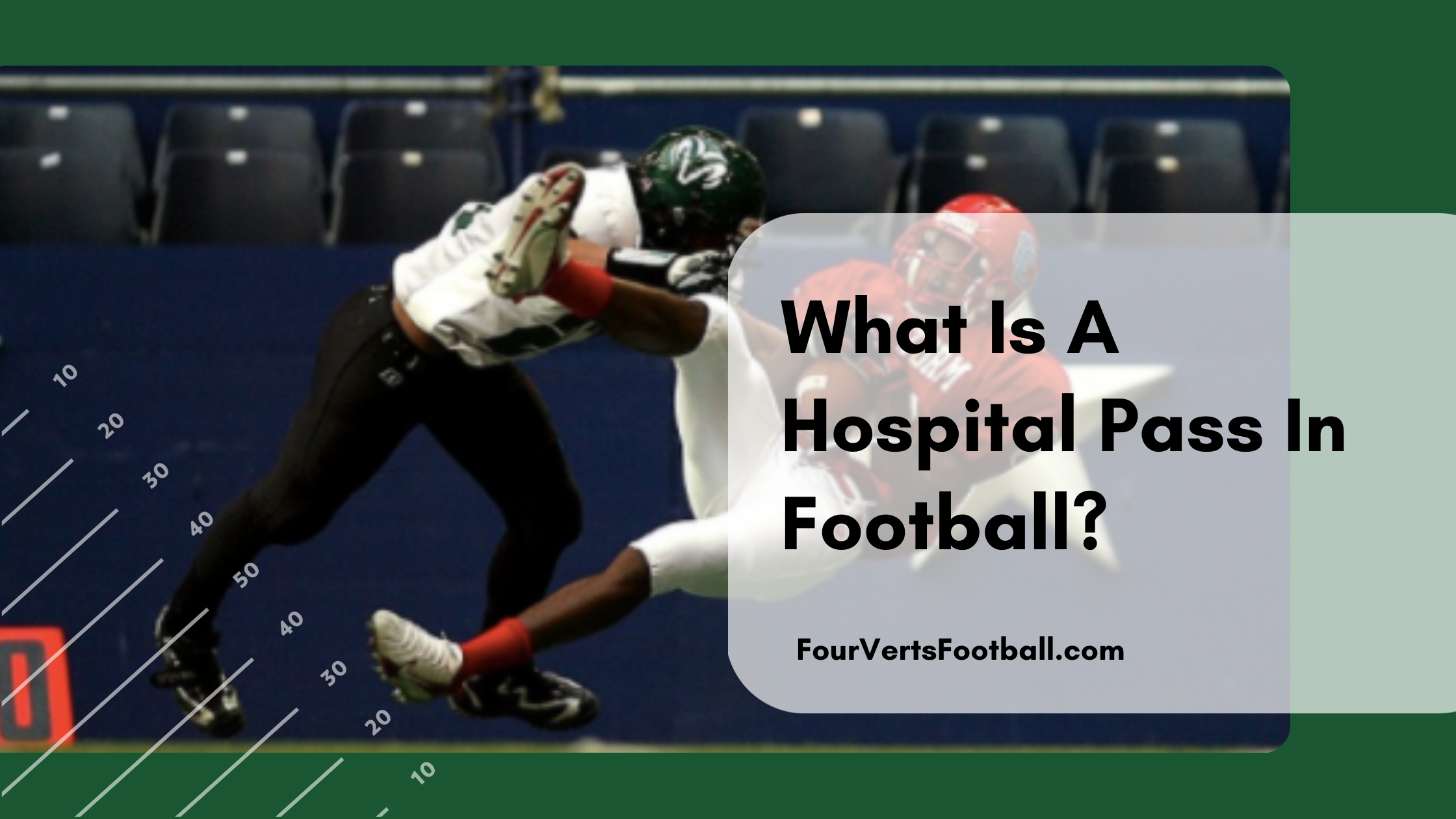A hospital pass in football refers to a pass from the quarterback that leaves his wide receiver vulnerable for a big hit.
Football is a physical sport but when prepared for a hit you can do a pretty good job absorbing the blow. The plays in which you cannot protect yourself are the ones you need to worry about.
On a hospital pass, the receiver is typically reaching out for the ball while a defender gets a clean shot at him. The reason these passes are called hospital passes is because of the inherent injury risk they carry.
In the NFL you will not find many receivers that will not catch a ball to avoid a big hit. This means if a hospital pass comes your way it is likely you are going to have to suck it up and take the hit.
What Does A Hospital Pass Look Like?
Typically a hospital pass is going to have a few common characteristics. The first is that the ball is leading the wide receiver. For it to be considered a true hospital pass the ball must be leading a receiver into a dangerous area.
The leading aspect is also necessary so that the receiver is reaching out for the football.
The other factor that is almost always included in a hospital pass is a defender going in the opposite direction of the receiver. By this, we mean a receiver heading towards the endzone is hit by a safety heading the opposite way.
The opposing directions of these players is what usually makes these hits so big. Most often the two players will meet right around the time the receiver is catching the ball.
Can You Avoid Hospital Passes?
Hospital passes can be avoided as a wide receiver but it is not a manoeuvre that will earn you much respect with your coaches and teammates.
The best way to avoid a hospital pass is by using alligator arms. Now you must be wondering what does alligator arms mean in football? Alligator arms refer to the action of not fully stretching out your arms to catch a pass.
This term was coined due to the stubby arms of alligators. If you are chasing down a ball and you see a safety coming downhill you may opt to not fully reach out and let the ball fly by you. This may cause the safety to avoid hitting you as the pass will go incomplete.
Doing this manoeuvre is not going to earn you much respect but if you want to protect your health it may be a decision you have to make.
How Football Can Prevent Hospital Passes
As you know football has taken strides in order to improve safety in the game. One aspect of this is avoiding hospital passes as they often lead to concussions.
Concussions in football have been a major issue due to the effects of CTE on retired football players. The NFL and NCAA have begun to take strides in order to reduce concussions in football.
Some of these hospital rules include changing the kickoff location and penalizing crackback blocking.
In order to reduce the danger of these hospital passes the NFL and NCAA created rules to protect defenseless receivers.
This rule is based on protecting defenseless players. This does not only include receivers but players of any position that may fiend themselves defensless. Though one section of the rule is based on receivers which states:
A receiver attempting to catch a pass who has not had time to clearly become a runner. If the player is capable of avoiding or warding off the impending contact of an opponent, he is no longer a defenseless player – NFL Rulebook
This rule fully encapsulates a hospital pass situation. A player attempting to catch a pass who cannot protect himself is the typical situation of a hospital pass. Adding this penalty to the game has reduced the rate of hospital passes that result in big hits on the receiver.
Common Routes
Just by the nature of how defenses line up in the NFL certain routes are more prone to big hits. An out route for example rarely results in a player getting hit because it is directed towards the sideline.
A few routes are especially common when it comes to hospital passes in football.

Post Route
A post route in football involves the wide receiver running roughly ten yards down the field before cutting fourty five degrees towards the middle of the field.
In many defensive coverages, there is going to be a cornerback on the receiver and safety covering the middle of the field as well.
If the safety sees this route coming he will be able to come downhill and hit the receiver as he catches the ball. The receiver often times has no choice but to reach out for the ball with no real way to protect himself.
This can often lead to big hits as well as penalties for hitting a defenseless receiver.
Slant Route
Slant routes in football involve the receiver taking only a step or two forward and then cutting diagonally across the field for a quick reception.
On this route, the receivers will have to turn their heads back towards the quarterback in order to catch the pass. This leaves them blind towards the middle of the field.
Depending on the defensive pass coverage linebackers are sometimes able to hit the receiver as he catches the ball.
The linebackers will typically play a zone in the middle of the field. With the receiver running towards him with their head turned the linebacker has an opportunity to lay out a big hit.
This can often result in the receivers using alligator arms due to the big hit that was coming their way.

